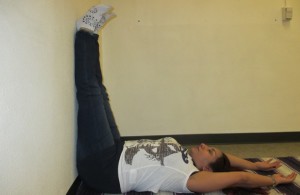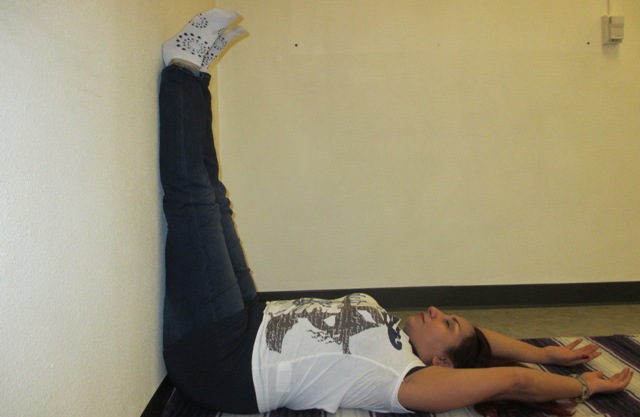Your pelvic floor health can be improved with the breath, body, and mind practices of yoga. Those same yogic practices can also prevent future pelvic floor issues. I have practiced and trained in yoga for pelvic floor health across the life span and integrate material into all classes.
Often, a more specific individualized internal assessment and specialized diagnosis is necessary.
I then refer students to Physical Therapists with specialties in pelvic floor health. We partner in being supporters, providers, and advocates for our students’ health and well being.
In this article, we learned about prenatal yoga and physical therapy to support women’s health during pregnancy. We now move across the lifespan, discussing peri/postmenopausal issues.
Thank you to the talented PTs at Bodycentral Physical Therapy for your thoughtful and helpful responses!
Madeleine Bennett, PT, DPT Ajo location
Sarah Bialik, PT, DPT Tanque Verde location
Melissa L. Buss, PT, DPT, WCS, CLT Swan location
Is pelvic floor dysfunction inevitable with age?
Some things are inevitable with age such as menopause, which brings about its own pelvic floor issues…potentially. Some women go through menopause and there are no issues, others have several challenges that come up. PT can help.
Leakage, though, is NEVER normal with menopause. Leakage is TYPICAL but not normal.
Just as getting weak is not inevitable with age, pelvic floor muscles if properly cared for do not inevitably develop dysfunction.
What are some symptoms of pelvic floor dysfunction that indicate women might benefit from an assessment and diagnosis by a pelvic floor physical therapist?
A myriad of symptoms can signal something might be wrong. Urinary frequency (more than once every two hours during the day and/or night-time urination), straining to void or have bowel movements, feeling like you need to void all the time, slow urine stream, and painful intercourse are a few obvious ones.
Pressure or heaviness in your pelvis, or your gynecologist diagnosing prolapse, and frequent UTIs are other symptoms.
More general symptoms can be as simple as low back, pelvic, lower abdomen, or hip pain.
It is always worth checking in with a specialized pelvic floor physical therapist when you notice abnormalities as we are able to assess and treat any symptoms before they worsen or have a significant impact on quality of life.
The yoga I teach focuses on alignment, breathing fully, and addressing a balance of strength and flexibility. Please comment how the preventative and alignment base of yoga is a great partnership with pelvic floor PTs.
Yoga is one of the best preventative and complementary treatments with pelvic floor therapy, for several reasons. As a society, we don’t move, so then when we try to move it hurts, doesn’t feel right, etc.
We would love to spend hours with each patient going over postures and stretches to ease daily activity motion but simply don’t have the time.
Yoga, if well taught, includes multiple movements that are good for the body and the soul. We are big proponents of appropriate live yoga classes instead of an at-home program; no one is watching you to correct alignment or give verbal cues on how you can deepen the stretch.
It makes a world of difference. Learning to breath again is something taught to our patients, but one hour a week isn’t going to do it.
We rely on you and other well trained yoga instructors to help patients with the reinforcement!

Many people are curious about pelvic floor physical therapy but could be shy, nervous, or self-conscious to see you. Can you ease minds and tell them what to expect?
As Physical Therapists, we specialize in the function of muscles, bones, joints, and nerves. As Pelvic Health PTs, those structures are located in and around the pelvis. At the first visit, you will fill out paperwork detailing the symptoms you are having as well as medical history. You will then meet with a Pelvic Floor PT to discuss the paperwork and complete a full musculoskeletal evaluation. This will likely include strength testing, sensory testing etc.
At some point (not always the first visit) we will need to do an internal pelvic floor muscle examination. For women, this is usually completed vaginally, and our goal is to assess your muscles and the nerves that help control them.
If someone is not comfortable with an internal assessment, biofeedback on the computer is a great option.
If they are not interested in using the computer, there are external tactile cues and patient education to give the patient ideas for home exercises and to get an understanding of their diagnosis with a different approach.
Many people are fearful as they feel shy or alone with their diagnosis. Coming from treatment pelvic health and women’s health 40 hours a week, we can attest that many people are going through the same thing!
You also might be guided through a general orthopedic external examination where the therapist will look at your pelvis, hips and back for alignment dysfunction
All is completed in a private treatment room, not the middle of a Physical Therapy gym, and because you are the most important part of your rehabilitation, this will be discussed with you to answer any specific questions you have.
Additionally, there will never be a treatment or assessment performed without the consent and understanding of the patient.
This is your healthcare, your appointment, your time.
If an internal exam and treatment doesn’t sound appealing, then we don’t do it. The therapists have various different paths to lead to the same direction. Albeit we will probably reach a plateau if we stick to only one path, but it is up to the patient to decide when he/she is ready for something else.
What are the most common issues/diagnosis in peri/post menopause?
Prolapse, incontinence, and/or painful intercourse. All of this is typically tied to the fact that women have lost/are losing their estrogen which aids in vaginal mucosal production. Once that is decreased or gone, many things change.
Medical Diagnoses would include some of the following: Stress urinary incontinence, urge urinary incontinence, mixed incontinence, fecal incontinence, constipation, urinary hesitancy, urinary urgency, dyspareunia, vulvodynia etc.
Also, frequent UTIs, and a feeling of heaviness in the pelvis.
It is always worth seeing a therapist when you notice abnormalities. We are able to assess and treat any symptoms before they worsen or have a significant impact on quality of life.
What kinds of treatments are provided with PT?
Manual therapy is sometimes indicated for patients, which can be anything from alignment correction, soft tissue mobilization, deep tissue muscle release, scar tissue mobilization, kinesiotaping, cupping and/or dry needling.
Therapeutic exercise is included in treatment plans.
Re-training someone how to use their core correctly with movement is something we spend time on, especially if its someone who wants to get back to exercise of some kind.
Importantly, we provide a wide range of treatments including internal muscle assessment to address which muscles may be the cause of complaints. We also have access to sEMG biofeedback, which will give patients a visual of the pelvic floor muscle coordination and activation/resting tone which tends to be quite successful.
Looking externally at pelvic alignment, soft tissue symmetry, strength and length also play a role in a healthy pelvic core.
Exercising, yoga, and the development of a home exercise program are often given that can help improve bowel/bladder health. We also provide other strategies to avoid putting stress/strain through your pelvic floor.
How often is surgery the only solution?
Surgery is only indicated in the rare instance that whatever diagnosis the patient has is the worst or has been going on for far too long.
This is a big reason why we tell people to come into therapy early so we can prevent further complications and potentially reach a point of no return.
According to the research, PFPT is about 80% effective to eliminate symptoms of Pelvic Floor muscle dysfunction.
There are very few times (with significant prolapse etc) that surgery is the only solution. If you have PFPT and then require surgery, your surgical outcomes are often better.
Just as a knee surgery is more successful if you are strong prior to surgery, the same is true with Pelvic surgeries.
A woman can participate in a course of “prehab” prior to surgery to improve surgical outcomes at the very least, and see if we are able to control symptoms enough to prevent the need for surgery.
Does pelvic floor dysfunction occur for men in this age group?
Pelvic floor dysfunction is not only a female issue. Men experience similar symptoms including urine and fecal leakage, pain, constipation etc.
Most commonly we see men who have had a prostatectomy and are dealing with incontinence and ED(erectile dysfunction), but that isn’t the only instance. Rectal pain, constipation, straining or leakage are also common. Some ED can be treated with pelvic floor therapy as well as some scrotal, perineal or penile pain.
Many times, rectal pain or muscle spasm are complaints for these patients as well as reports of difficulty with bowel movements or difficulty initiating urine stream, voiding fully as well as some complaint of erectile dysfunction. the treatment is quite similar between male and female as it is comprised of many of the same soft tissues, bones and ligaments.
Prenatal Yoga and Pelvic Floor Information provided here.
.

